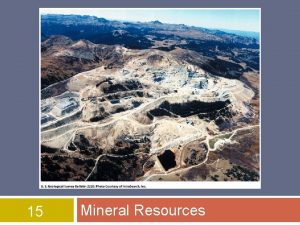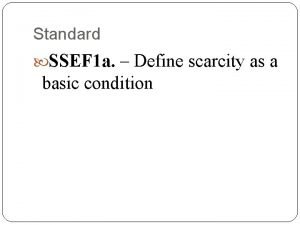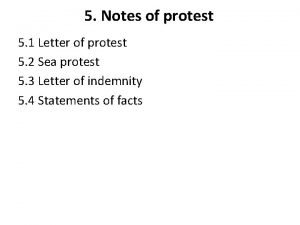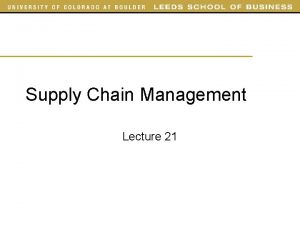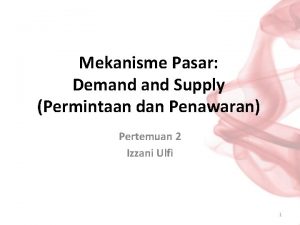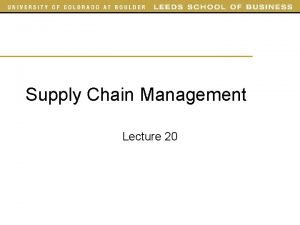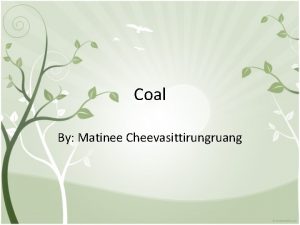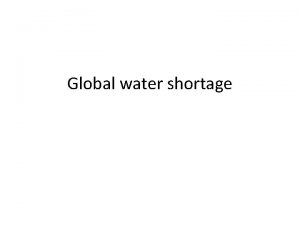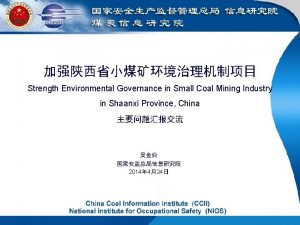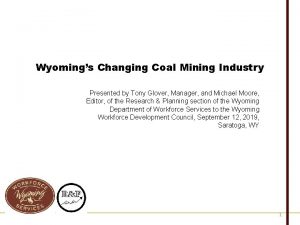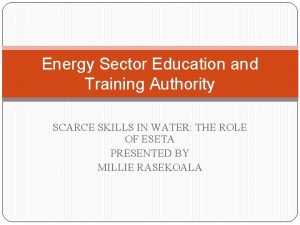SA Coal Mining Industry Scarce Skills Shortage Paul






























- Slides: 30

SA Coal Mining Industry Scarce Skills Shortage Paul Schutte Jan Hanekom Jack Mashibini

Black slide

Job Applicants

Black slide

Contents • • • Request for study Research methodology Situation within the coal mining industry The future Recommendations

Request for Study • SACMA and SACHRA initiative – Current situation – The flow of personnel – Assessment of future requirements – Potential gap – Feedback

Contents • • • The problem statement Research methodology Situation within the coal mining industry The future Recommendations

Research Methodology • • • Existing literature Focus on South African Coal Mining Industry Survey by means of questionnaire Presentation to SACHRA Pilot questionnaire Confidentiality was guaranteed to all participants

About the questionnaire • The questionnaire had 5 categories – General data – Skills categories – Growth – Resignations and appointments – Training

Feedback received Company No. of Mines Total no. of participated employees for the group Provided group training Sasol Mining 5/5 Yes Exxaro 3/7 Yes Anglo Coal 2/9 Yes Xstrata Coal 4 / 13 Yes BHP Billiton 0/5 Yes

Feedback received (Cont…) • 30 679 permanent employees and 23 891 temporary workers and full time contractors • Data represented 42% of the total labour force • 50% of sample was from Sasol Mining • 42% was linearly extrapolated to 100%

Contents • • • The problem statement Research methodology Situation within the coal mining industry The future Recommendations

Situation within the coal mining industry • Scarce skills make up 28% of the permanent labour force • Machine operators and miners not covered

Scarce skills categories

Artisan Disciplines

Engineering disciplines

Situation in Sept 2007 • ± 8% positions were vacant in the scarce skills categories • 15, 1% of the employees in the scarce skills categories resigned during the previous 12 months • 17, 2% new appointments were made • The movement was mainly within the coal mining industry

Main reasons for resignations

Black slide

Contents • • • The problem statement Research methodology Current situation within the coal mining industry The future Recommendations

The future… • SA economy grows by approximately 4 - 6% per year • 50% of employees are 45 yrs and older (estimation) • Smaller companies do not have training programs – estimated 3% loss • The coal mining industry will need to appoint 14% more of its current workforce per annum

Portions of 14% per year to be appointed from training Demand 105% 100% 3% to close gap (in 4 years) 5% growth Vacancies 92% 3% 3% 6% Retirements Currently employed Loss to other companies 0 1 Year 14% per year to be appointed from training

Future demand for Scarce Skills 17%

Supply and demand of trainees

Supply and demand of engineering skills

Supply and demand of artisan skills

Contents • • • The problem statement Research methodology Situation within the coal mining industry The future Recommendations

Recommendations • All mining houses must investigate their future need vs. growth • Train existing employees for scarce skills categories where potential exists • More serious mentorship • Recruit previous employees who resigned • Coal Mining industry training forum • Retired employees be contracted • Other factors affecting scarce skills problem to be addressed in further studies

Conclusion • • There is a growing demand for coal! Scarce skills make up 28% permanent labour force Approximately 8% vacancies are difficult to fill The Coal Mining Industry must cooperate to ensure that training programmes will provide in their future needs • Not enough training is done!

 Coal mining process
Coal mining process Coal strip mining
Coal strip mining Coal strip mining
Coal strip mining Artificially scarce goods
Artificially scarce goods When the by-products of human actions taint the environment
When the by-products of human actions taint the environment Because it is desirable sunshine is scarce
Because it is desirable sunshine is scarce Scarcity
Scarcity Mood...
Mood... Artificially scarce goods
Artificially scarce goods Strip mining vs open pit mining
Strip mining vs open pit mining Chapter 13 mineral resources and mining
Chapter 13 mineral resources and mining Difference between strip mining and open pit mining
Difference between strip mining and open pit mining Difference between text mining and web mining
Difference between text mining and web mining Mining multimedia databases
Mining multimedia databases Eck
Eck Semma model
Semma model Definition of scarcity in economics
Definition of scarcity in economics Surplus vs shortage
Surplus vs shortage How to fill out a da 3161
How to fill out a da 3161 Letter of protest sample shipping
Letter of protest sample shipping Pico question for nurse retention
Pico question for nurse retention Managing uncertainty in supply chain safety inventory
Managing uncertainty in supply chain safety inventory Expected shortage per replenishment cycle
Expected shortage per replenishment cycle Shortage or surplus
Shortage or surplus Mekanisme pasar permintaan dan penawaran
Mekanisme pasar permintaan dan penawaran Questions for the house on mango street by chapter
Questions for the house on mango street by chapter Cycle service level vs fill rate
Cycle service level vs fill rate Is there a teacher shortage in georgia
Is there a teacher shortage in georgia Expected shortage per replenishment cycle
Expected shortage per replenishment cycle Expected shortage per cycle formula
Expected shortage per cycle formula How do outsiders view esperanza’s neighborhood?
How do outsiders view esperanza’s neighborhood?


